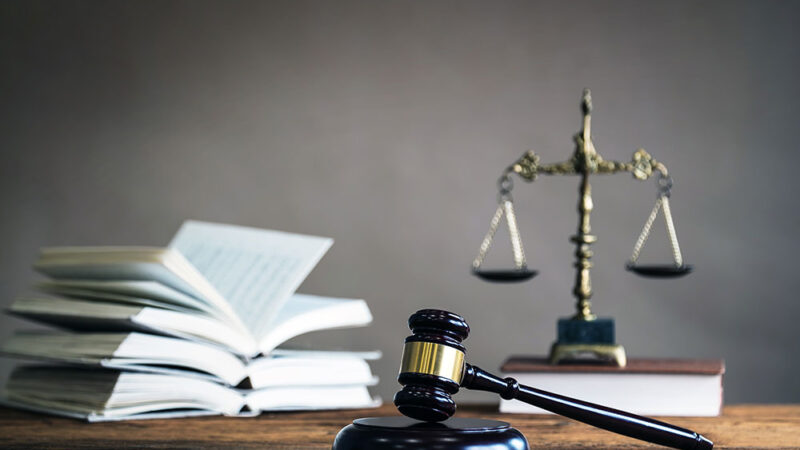How Commercial Litigation Attorneys Navigate Complex Business Disputes

When money, market share, and hard-won reputation are on the line, businesses can’t afford guesswork. Commercial Litigation Attorneys step into messy, high-stakes disputes, contract breaches, partnership breakdowns, trade secret fights, and impose structure, strategy, and speed. They don’t just argue: they triage, model risk, preserve leverage, and look for off-ramps that protect both the balance sheet and the brand. Firms like Saltiel Law Group combine courtroom skills with business fluency, helping executives choose the right battles and resolve the wrong ones fast. Here’s how seasoned counsel navigate complex business disputes in 2025, from the first demand letter to trial, and why early, strategic intervention can change the outcome before anyone files a complaint.
Common business disputes requiring litigation support
Commercial disputes rarely arrive neatly labeled. They show up as missed deliverables, tense board meetings, or a competitor suddenly hiring three top salespeople. The matters most likely to require litigation support include:
- Breach of contract and warranty claims: Failed implementations, supply shortfalls, and SaaS downtime that trigger service credits, limitation-of-liability questions, and consequential damages fights.
- Partnership and shareholder disputes: Deadlock, minority oppression, books-and-records demands, and disputes over distributions or buyout rights under operating agreements.
- Business torts: Fraud, negligent misrepresentation, tortious interference with contract or prospective advantage, unfair competition, and trade libel.
- Trade secret theft and restrictive covenant issues: Departing executives leaving with customer lists or code, noncompete and nonsolicitation battles, and emergency injunctions to stop ongoing harm.
- Licensing, distribution, and franchise conflicts: Territory encroachment, quality control breaches, and termination disputes.
- Real estate and commercial leasing: Co-tenancy and CAM disputes, option rights, casualty clauses, and force majeure allocations.
- M&A earn-out and indemnity fights: Disagreements over post-closing adjustments, reps-and-warranties breaches, and escrow release.
- UCC and payment conflicts: Battle-of-the-forms problems, chargebacks, inadequate assurance of performance, and setoff/recoupment.
- Executive employment and compensation: Equity vesting, change-in-control payouts, clawbacks, and alleged fiduciary breaches.
A typical pattern: a supplier misses a critical shipment, the buyer threatens termination, and both sides point to different sections of the master services agreement. Commercial Litigation Attorneys map the facts to the contract, evaluate damages with a forensic lens, and decide whether to push for a negotiated cure, seek a TRO to stabilize the relationship, or move swiftly to litigation to preserve leverage.
Strategic approaches attorneys use in commercial cases
There isn’t one playbook, there are many. Effective Commercial Litigation Attorneys select and sequence strategies to fit the dispute, the forum, and the client’s goals.
- Early case assessment (ECA): Within the first 30–60 days, counsel clarifies liability theories, damage ranges, collectability, and business disruption risk. A good ECA produces a decision tree and budget that executives can actually use.
- Preservation and control of evidence: Litigation holds, custodian interviews, and ESI protocols come first. Where risk of spoliation exists (think ephemeral messaging or BYOD devices), attorneys move quickly for forensic imaging or agreed retention settings.
- Forum and procedure choices: Evaluate arbitration clauses, choice-of-law provisions, removal to federal court, and whether to consolidate or sever claims. Jurisdiction and venue often shift the leverage calculus.
- Provisional remedies: In high-velocity disputes, speed beats perfection. Temporary restraining orders, preliminary injunctions, attachments, or receiverships can stop competitive harm and preserve assets.
- Pleadings and motion practice: Strong complaints and counterclaims frame the narrative and the remedy. Rule 12 motions to dismiss or strike can prune weak claims and set up fee-shifting or sanctions where appropriate.
- Discovery that’s targeted, not bloated: Phased discovery, protective orders, and negotiated ESI search terms keep costs in check. Technology-assisted review (TAR), Slack/Teams protocol agreements, and focused depositions of “linchpin” witnesses drive clarity without waste.
- Expert alignment: Forensic accounting, damages, valuation, and industry experts help quantify lost profits, price erosion, or unjust enrichment. Daubert-proofing begins at retention, not the night before the motion.
- Negotiation and ADR design: Mediation works best with genuine data. Counsel use anchors, brackets, and contingent terms (e.g., performance-based earn-outs, confidentiality protections) to bridge valuation gaps.
- Cost discipline and fee structures: Alternative fee arrangements, milestone billing, and success components align incentives. The question isn’t “What does trial cost?” but “What does a business win look like, and what’s the least expensive path to it?”
- Trial readiness and appellate positioning: Theme development, demonstratives that simplify complexity, and careful preservation of error keep the case trial-true and appeal-safe.
At a firm like Saltiel Law Group, strategy is iterative. If a preliminary injunction is denied, the team may pivot to damages acceleration and early summary judgment on liability. If a forensic image reveals clean hands, counsel presses for a public exoneration and fee recovery. The constant is clarity: align litigation steps with the client’s commercial objectives.
Early intervention as a tool for dispute resolution
Waiting rarely improves a business dispute. Early intervention by Commercial Litigation Attorneys can cut through emotion and uncertainty before positions harden.
- Demand-and-dialogue with purpose: A well-crafted notice of breach or demand letter sets deadlines, proposes a cure, and signals the remedies available, without poisoning the well. Sometimes a standstill or tolling agreement creates space for productive talks.
- Evidence triage: Day one tasks include locking down key emails, chat channels, and financial data: suspending auto-deletion: and interviewing custodians. Quick forensic snapshots often prevent later spoliation fights.
- Business off-ramps: Counsel can structure interim operating agreements, escrowed payments, or partial performance milestones that de-risk operations while parties negotiate final terms.
- Early ADR: Mediation in the first quarter of a dispute, backed by a damages range and realistic collectability analysis, frequently resolves matters at a fraction of the later cost.
Consider a common scenario: a reseller claims unpaid commissions on a national rollout. Within two weeks, counsel verifies the commission plan language, secures CRM exports, models damages under alternative interpretations, and proposes a short-term payment ladder contingent on customer renewals. No complaint gets filed, reputations stay intact, and both sides continue doing business, exactly the kind of outcome early intervention is designed to achieve.
Case law trends shaping litigation outcomes in 2025
Legal currents matter. In 2025, several trends are shaping how commercial cases are litigated and resolved:
- Restrictive covenants in flux: Noncompete and nonsolicitation enforcement continues to evolve, with state-level restrictions tightening and federal scrutiny elevated. Courts remain more receptive to narrowly tailored protections tied to legitimate interests (trade secrets, customer goodwill). Employers are leaning harder on NDAs, garden leave, and targeted non-solicit provisions.
- Arbitration, but on firmer terms: Courts broadly enforce the Federal Arbitration Act, yet scrutinize delegation clauses, mass arbitration waivers, and fee-splitting arrangements. Well-drafted arbitration clauses now address venue, governing rules, confidentiality, discovery scope, and cost allocation to reduce later fights.
- Proportional discovery and ephemeral messaging: Judges are increasingly strict about FRCP 26 proportionality. Expect more orders confronting Slack/Teams data, personal device use, and ephemeral messaging. Parties with clear retention policies and early ESI protocols avoid sanctions and save real money.
- Damages proof under a brighter light: Lost profits require “reasonable certainty,” not speculation. Courts favor models grounded in contemporaneous data, unit economics, cohort churn, contribution margins, and expect mitigation analysis.
- Data privacy overlays: State privacy laws (like California’s CPRA and similar regimes) influence discovery, especially for consumer or employee data. Stipulated protective orders and data minimization are now table stakes.
Commercial Litigation Attorneys who track these trends shape the issues before they’re joined, drafting tighter covenants, tightening discovery scopes, and choosing forums that match the dispute’s risks.






